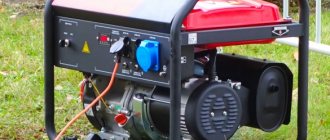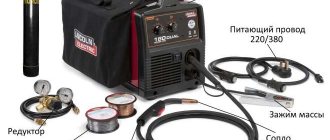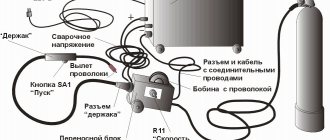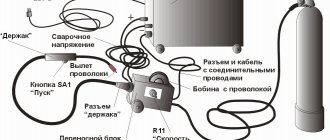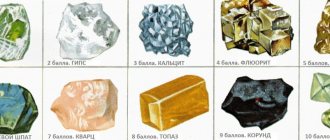The lightweight and easy-to-use metal stove “potbelly stove”, with all its advantages, has one significant drawback: low efficiency.
To heat a room, an ordinary metal potbelly stove usually spends 50-70% of its efficiency, the rest of the heat simply flies out into the chimney.
It is clear that it is very difficult to reconcile with such a situation, but unfortunately, few stove owners take radical measures to increase the efficiency of the furnace. Although, as experience shows, with a little skill and spending a little time you can get a fairly effective stove from this gluttonous design.
Why increase efficiency?
The compact dimensions of the stove mean that the surface that heats up during operation is small. Not much heat flows outside and the room quickly cools down. Sometimes it seems that the return from the potbelly stove is weak.
To help it increase efficiency, several tasks are solved:
- the duration of combustion and smoldering increases;
- a sufficiently high combustion temperature is ensured;
- a high level of traction is achieved.
Standard potbelly stove efficiency
Step-by-step instruction
A stove made from a metal barrel.
The standard sequence for assembling a potbelly stove:
- Drawing up diagrams, calculations, purchasing building materials, preparing tools.
- Cleaning the body blank. The remaining propane is released from the old gas cylinder. The lid is twisted and the inside of the container is washed several times with soapy water.
- Cutting a hole for the firebox. It is done at a height of at least 15 cm from the bottom. Such clearance is necessary for the free movement of the ash pan. You can immediately cut an opening for a drawer for ash.
- Manufacturing or purchasing factory-made grate bars. The gratings are made with your own hands from reinforcement or sawn and welded strips of cast iron.
- Welding to the support body. They should be 10-15 cm high. The metal should be strong and thick so that reliable seams can be applied to it with electrodes No. 3-4.
- Welding supports for grate bars. The best option is a corner of 20x20 mm. The distance between the shelves should be taken 3-4 mm larger than the width of the grate - for its thermal expansion during strong heating.
- Making an ash pan, a door and a poker.
- Screwing the door to the body. Inserting the ash drawer into the opening.
- Assembly and removal of the chimney to the street.
Finally, a control fire is carried out. If there are smoke leaks, clamps and asbestos cord are applied to these places.
Methods to increase efficiency
There are several ways to increase the efficiency of a potbelly stove in the garage and stop freezing. They are complex in varying degrees: from a sandbox to an updated design. All of them are produced without serious financial costs, and improvised means are used for their implementation. Let's consider each method for increasing the efficiency of a potbelly stove separately.
Changing the chimney
The efficiency of a potbelly stove is directly affected by the shape of the chimney. To ensure that heat transfer does not suffer, the pipe design must meet certain parameters.
- The pipe must be vertical. Angles with an inclination of no more than 45 degrees are allowed. If conditions force you to insert 90-degree angles, then you should try to use them as little as possible.
Angle 90, replace with 45
Make the chimney higher
Brick screen around the stove
The brickwork around the device allows you to retain heat and protect yourself and others from contact with hot metal. Properly placed masonry increases heat transfer by about a quarter. When the potbelly stove is heated, the brickwork heats up. After the fuel burns, it will continue to share the collected heat. Experts advise laying bricks not close to each other, but 30 centimeters from the walls of the firebox.
To lay out the screen, you will need a couple of dozen heat-resistant bricks:
- the screen is laid out on clay mortar;
- the first row is laid out according to the intended markings;
- in the second row, ventilation gaps are made the size of half a brick;
- the brick is laid out in accordance with a pre-designed shape and size for the opening;
- A steel strip is attached to the last row for additional fixation.
Improving heat transfer using fuel
A metal stove is heated in different ways: from wood to sawdust with small debris. To improve heat transfer in a potbelly stove, compressed sawdust, briquetted industrial waste and coal are used.
- Compressed sawdust burns out much more slowly - one load is enough for many hours of smoldering.
- Briquettes are made from wood shavings and waste. The pressed composition allows them to smolder for a long time, because they cannot flare up. Briquettes smolder evenly and for a long time, increasing the heat transfer of the potbelly stove.
Sawdust briquettes
It is also worth assessing the traction force. This can be done by looking at the color of the flame. If there is not enough air, the flame turns red and dark stripes appear; if there is too much oxygen, the flames become bright white. The draft, and with it the efficiency of the stove, is normal when the flame is golden-orange. For better traction, you can blow the potbelly stove using a conventional fan.
Sandbox
If you have no desire at all to re-equip your stove, add anything to it, or experiment with different types of fuel, there is the simplest and most economical method. A box is placed on the potbelly stove, in which two buckets of sand are placed.
Place 2 of these buckets in a box on top of the stove.
Redesign of the structure
Steel corners welded on the sides strengthen the device itself and increase the temperature of the furnace. Metal side screens are also screwed on for these purposes.
Craftsmen attach sheets of iron 6 centimeters from the walls of the firebox. This is done so that the heat energy is transferred using convection, due to which air moves between the installed plates and the body of the potbelly stove.
Install protective metal screens
To prevent the heat energy from disappearing so quickly, you can use a metal cassette. It is a cylindrical object welded from a sheet of steel. It is called a cassette because it is inserted into the combustion chamber. A little firewood is loaded into the cassette, turned over and placed in the potbelly stove so that the firewood itself gradually falls onto the heated coals and ignites. While the wood already in the firebox is burning, the remaining wood in the cassette is dried and lights up after the first layers.
Using additional coolant
The stoves are complemented with water tanks and so-called water jackets in order to use them as an additional coolant and save energy.
The water jacket is designed as follows. A U-shaped tank in which water is heated is mounted in the housing. Two pipes branch off from the tank: for supply and processing. The tank itself is fed by tapping into the pipeline.
The efficiency of a potbelly stove increases without the help of specialists and serious financial investments. To make the stove heat up better, we can resort to changing the design, additionally covering it with masonry, or simply change the type of fuel. All these methods differ in complexity, but have one thing in common - they work.
How to increase the heat output of a furnace
So, how to increase the efficiency of such a stove? There are several simple ways. The most basic one is to put a brick screen around the stove. The bricks don’t even need to be held together with clay; just lay them on top of each other. You can fold such a screen near the side walls, or you can fold it at both side and rear walls. The brick will heat up while the fire is burning, and when it becomes small or goes out, it will give off heat. You won't have to add fuel often. One of the features of a potbelly stove is that the stove is light and mobile. With such a screen, it will not lose its mobility, because the bricks can be disassembled at any time, the stove can be rearranged and the screen can be folded in a new place.
https://youtube.com/watch?v=SNKEQmQMxl4
There is another method with a screen, which also increases heat transfer. In this case, a sheet metal screen is mounted at some distance from the side and/or rear wall of the stove. The sheets can be secured using long bolts. In this case, the effect of convection is added.
There is another simple way to increase heat transfer. This time the stove's chimney is being modernized. Typically, such stoves have a straight chimney. It is removed through the roof of the room in which the stove is installed. If you add several bends to the pipe, then the heat transfer will increase, although not by much. In this case, the pipe will resemble the letter S.
If you want it to be much warmer, then you need to take 2 tanks from old-style washing machines. The tanks are welded together, and a chimney is passed through them. Thus, above the potbelly stove, which is heated with wood, there is also a stove of the same size, heated by hot smoke. Heat transfer almost doubles.
Another method is to weld additional ribs onto the stove and chimney, for example, from metal angles. In this case, the chimney must be made of thick metal. Such fins significantly increase the heated surface area. An increase in area leads to faster heating of the surrounding air. The room becomes warmer. In addition, thick metal retains heat even when the fire in the firebox is no longer burning.
But still, it will not be possible to endlessly increase the efficiency of this heating device. And if you want to have a full-fledged stove in the room, you will have to build it out of brick according to all the rules, so that the stove retains heat for a long time, for example, all night. For example, there is no need to increase the efficiency of a Russian stove; it already retains heat for a very long time. True, in order to fold it correctly, you will have to call a stove specialist.
https://youtube.com/watch?v=GeMINGFp_lo
Ways to increase efficiency
Potbelly stoves are made in various shapes and sizes. But they have one drawback in common - low efficiency. More than half of the thermal energy, in the literal sense of the word, flies out into the chimney. The irrational use of heat has led to the fact that the owners of these heating devices began to think about possible changes in the design of the furnace to increase its efficiency. The solution to this problem could be a partial modernization of the potbelly stove. There was no single concept for solving this issue, and each stove owner began to solve the problem independently, by trial and error.
Increasing the efficiency of a potbelly stove means receiving additional heat from the heating device while maintaining a constant amount of burned fuel. This can be achieved in several ways:
- changing the heat transfer surface,
- increase in heat removal;
- using more high-calorie fuel;
- increasing the heat capacity of the furnace.
The potbelly stove gives off heat to the surrounding space not only with its body, but also with its metal chimney. You can increase the heat transfer surface of the device by revising its dimensions upward. This option is possible when creating a stove with your own hands. Having already made a potbelly stove, you can do it in another way. Usually a corner is welded to a chimney made of a metal pipe. Position it with its apex facing the element along its entire length. The angle is installed around the pipe. Thus, the area of the heat transfer surface can be increased by 3-4 times, depending on the size of the corner.
Another option for increasing the heat transfer surface is to make a chimney running inside a large area. For this purpose, a chimney with turns is made. They are performed in the form of smooth transitions. It is undesirable to create turns at right angles, as the potbelly stove may start to smoke. The last section of the chimney is installed vertically. A pocket is made on it with a hatch for cleaning soot.
If it is impossible to lengthen the pipe, its design is changed. Cylinders made of pipes with a diameter of 300-400 mm are welded onto the pipe coming out of the furnace body. They are connected to each other by pipe sections with a diameter no less than that of the smoke pipe. They are welded out of alignment to increase the smoke path.
Making an ash pit
An ash pan is a grate near a potbelly stove, on which fuel will subsequently be placed to heat the room.
A good ash pan provides the combustion chamber with a sufficient amount of air (that is, oxygen), and also provides good draft, thereby ensuring better combustion. In most cases, ash pans in potbelly stoves leave “much to be desired,” so upgrading the ash pan will help improve the performance of the potbelly stove.
An effective ash pit should be made of heat-resistant material and have a door, thanks to which you can avoid smoke in the room. Improving the ash pan will help turn an ordinary potbelly stove into something like a fireplace.
Instructions
Making an ash pan yourself will require certain skills from you, and the production must be in accordance with the instructions:
- First you need to weld the box to the size of the potbelly stove, without the top wall and leave a rectangular cutout in the end wall. Steel is most often used in production. The dimensions must correspond to the width and length of the potbelly stove itself.
- Make holes in the bottom of the stove.
The diameter of the holes should be about 20 mm. Drilling holes for the ash pan - Weld the box to the stove.
- Install the door into the ash pan.
This design will give better and more uniform operation of the potbelly stove.
Ensuring heat removal
It is possible to increase heat removal by creating devices that promote natural and forced convection. To ensure natural air circulation, screens are made with a guide device that allows you to create a powerful convection flow and distribute it throughout the room. The guide apparatus is made in the form of curved strips of metal, welded to the screen and directing warm air not only upwards, but also to the sides. The prepared device is attached to the oven.
The heat removal device can also be made from scraps of water supply and profile pipes. The distance from the floor to the bottom edge of the elements must be at least 15-20 cm. The pipes are welded to the stove body and covered with a screen on the sides to protect against accidental contact. A traditional potbelly stove heats the air around it by 0.5-1.0 m, and the use of such a design allows you to increase not only the radius, but also the rate of temperature rise in the room. When the body of the heating device is heated above 60 °C, a stable convection draft appears in the device, the power of which increases as the temperature of the furnace increases.
Heat removal can be increased by using fans to blow over the heat transfer surface. Both household and old car fans are used. Devices with variable rotation speeds have proven themselves especially well. They allow you to regulate the temperature and heating time of the room in various oven operating modes.
For more efficient blowing of the furnace elements, special casings are installed that allow cold air to be directed to the hottest areas of the heating device, while it can be taken from various places in the room. A potbelly stove with pipes welded into the firebox for heating air has proven itself well. A multi-speed car fan installed on a common discharge manifold allows you to effectively heat the room.
The combined use of devices for artificial airflow and natural convection can significantly increase the efficiency of a potbelly stove, which means heating the room more efficiently.
The principle of a long-burning potbelly stove
There is nothing special or too abstruse about the design of such a heating device.
The design diagram is as follows:
- The lid is opened at the top of the potbelly stove and the cone is installed vertically.
- Sawdust is poured into the combustion chamber (to the limit). Then they need to be compacted tightly.
- The installed cone can be removed, the lid can be closed and ignition can begin.
- In order to light a potbelly stove, you need to pour small wood into the ash box. After this, do not close it completely so that there is a small gap for air circulation.
- A draft is formed through the chimney, the sawdust begins to smolder, and the potbelly stove works.
- Substances that are formed during the combustion process after leaving the firebox begin to heat the walls of the furnace and flow out through the pipe.
Thus, the room in which the potbelly stove is located receives up to 50% of the heat from the flue gas. The duration of such combustion reaches 11 hours - the result is a device with a high efficiency coefficient.
Increasing heat capacity
The heat capacity of a potbelly stove can be increased both by increasing its weight and dimensions and by using additional heated materials. In any case, it is necessary to make design changes to the heating system. One option may be to use smoke circulation inside the oven. This can be done by installing sheets of heat-resistant metal in the firebox, thereby providing additional paths for the movement of gases. At the same time, they are burned, heating the furnace to a higher temperature. But at the same time, the temperature of the exiting smoke also increases. With a short chimney, the heat is simply released into the atmosphere.
To use this heat, a heat-storing container is installed on the exhaust pipe of the potbelly stove, which can be made either from an old gas cylinder or from a large-diameter pipe. The container is filled with large stones that retain heat well. At the same time, it is loaded to approximately 2/3 of the volume. The stones are placed on the grate. Hot gases flowing through the battery heat them up and, giving off heat, go outside.
The stones are heated to a temperature of about 400 °C. After the fuel burns out in the stove, the damper on the chimney is closed and the room is heated using the heat accumulated by the stones. In this case, the stove is in a cold state. Using such a battery allows you not only to save fuel, but also to receive heat after the stove stops working.
The battery, which increases the efficiency of the furnace, can be made of brick and installed on metal supports above its surface. But such a design cannot be used with a round stove.
The calorie content of fuel depends on its type and quality. Replacing fuel with a higher-calorie fuel is expensive and requires additional storage space. As a rule, garages are heated with waste material that is easy to find. Now, knowing how to increase the efficiency of a potbelly stove, you can begin work. It should be noted that the best results are obtained with the integrated use of methods that increase the heating efficiency of the furnace.
Grid with stones
Modernizing a potbelly stove with a mesh with stones is quite one of the most common improvements. Almost everyone had a bath and steamed in the steam room. There you saw a set of stones that warm the air in the steam room.
The principle of this modernization method is similar. It is necessary to line the potbelly stove with stones, which continue to retain heat for a long time. It is worth remembering that you should not use galvanized material for manufacturing, since when heated, toxic fumes are released into the air.
Materials and tools
For this event we will need:
- a set of good stones (you can use high-quality clay bricks), preferably of medium size, similar to those you came across in the steam room.
- dense metal net, you can use a chain-link net.
- if you plan to do it like an adult, then you will need fittings and a welding machine.
Instructions
Making this improvement is simple:
- It is necessary to make a frame of metal mesh (or reinforcement) near the stove, which will not block access to the technological openings of the potbelly stove.
Design example
- After creating this frame, it is necessary to fill the cavities between the stove and the frame as tightly as possible with prepared stones.
You can also fill the cavities between the stones with clean clay, which will also help retain heat.
Precautionary measures
It is strictly forbidden to use flammable materials and metals with low melting points to create this improvement. Also, this structure should ensure free maintenance of the potbelly stove, not block access to the firebox, to the ash pan, and not interfere with the removal and replacement of outlet pipes.
Eight ways to increase efficiency
The efficiency of a wood-burning stove varies between 60-80%. It all depends on its design, the length of the chimney, the materials used for its construction and the firewood used. The efficiency increases significantly when using birch and oak logs with a humidity level of 13-15%. The higher the humidity, the less heat transfer and the more resin will remain on the internal surfaces.
You can increase the heat transfer of a potbelly stove and increase the efficiency indicator in the following ways - here is a list of them:
- Providing pyrolysis combustion of wood - it increases efficiency by 5-10%.
- Creating smoke circulation – the main task here is to maximize heat extraction from combustion products.
- Creating a natural convection system will improve the airflow of the potbelly stove, increasing heat transfer and accelerating the heating of the room.
- Fan blowing - as in the case of natural convection.
- Lining the potbelly stove with bricks retains heat and stabilizes the temperature.
- Increasing heat transfer through an air heat exchanger is a complex but very effective method.
- Increasing the length of the chimney is important if there is free space in the room.
Let's look at each method in more detail. All the modifications presented in the review can be done using the example of a simple rectangular potbelly stove.
Organization of smoke circulation
It is quite easy to increase the efficiency of a potbelly stove - you just need to improve the heat extraction. In traditional stoves, it instantly evaporates into the chimney. As a result, the efficiency remains low, and the stove heats the street. In other words, you literally throw away about 30-40% of the wood, it goes to waste. The problem is solved in a simple way - you need to retain the heat inside the potbelly stove for as long as possible. For this purpose, two smoke circulations are organized in it. They allow you to increase resistance, causing heat to escape into the walls.
This problem is best solved at the initial stage of assembling the potbelly stove. Weld two pieces of sheet iron into it, as indicated in the drawing. They form two smoke circuits. Passing through them, combustion products will give off heat to the maximum. And only after that they will go up the chimney.
Scheme of a stove-stove.
Pyrolysis combustion
Combustion products are full of heat and contain flammable elements. Afterburning them with secondary air allows you to extract additional kilocalories. To achieve this, wood is burned with limited supply of primary air. The next task is to burn out what is contained in the combustion products. Pyrolysis gases burn releasing a large amount of thermal energy. It is absorbed and emitted by the metal walls of the potbelly stove. Due to this, we will be able to increase its efficiency.
To organize pyrolysis combustion, you will need smoke circulation from the previous section. At the level of the first turn, the supply tube is welded. Secondary air is supplied through it. In its presence, the pyrolysis products are burned out - the efficiency increases by 5-10% of the initial value. On a monthly basis, this will result in savings of several tens of kilograms of firewood. Be sure to provide for a secondary supply if you have already installed smoke circulation.
Creation of a convection system (+fins)
Increasing the efficiency of a potbelly stove with your own hands involves creating a convector. Natural convection improves heat removal and ensures quick heating of the room. By installing a stove with a convector in the garage, we will get an excellent heating device. Literally 15-20 minutes after ignition, a comfortable temperature will be established in the garage. Our task is the following - we need to create a convector that sucks in air from below and exhausts it from above.
The easiest way to increase efficiency is to equip your potbelly stove with a metal screen. It is a sheet of iron that wraps the stove on the sides and back like a shirt. The distance between the body and the sheet is from 3 to 5 cm. The sheet is welded onto metal spacers - make them from thin reinforcement. The result is a fairly simple convector. The only problem is that the area of thermal energy dissipation will remain the same.
Fins will help increase the efficiency of a potbelly stove. It can be done:
- From a profile rectangular pipe 20x40 mm.
- Made from a U-shaped metal profile.
- From a traditional round inch pipe.
We scald the back and side walls with the selected material. This will help increase the dispersion area. At the same time, we will get an effective convector.
Forced airflow
Forced convection is more effective than natural convection. And it’s not so much a matter of efficiency, but rather the speed of heating the room. For these purposes, you need to use any fan – even a household one. We place it 50-60 cm from the stove, connect it to the power supply, turn it on and enjoy the result. A powerful air flow will effectively remove heat from the surface of the stove and distribute it throughout the room. The costs are minimal - you only need an old fan with a low noise level so that it does not put pressure on your ears.
Chimney modification
Quite an interesting way to significantly increase the efficiency of a traditional potbelly stove. To do this, we take the following steps:
- Take a small old gas cylinder or other metal container.
- We weld metal tubes between the bottom and the lid.
- We make cutouts in the side walls to suit the diameter of the chimney.
- We cut the chimney and weld the resulting module into it.
Such a non-trivial solution will significantly increase the efficiency of your potbelly stove.
The result should be a design like the one in the picture below. Next, all that remains is to install a fan opposite the module, blowing air through the tubes. This step will help increase efficiency by removing the heat remaining in the combustion products.
In other words, our task is to cool the combustion products as much as possible, removing all remaining thermal energy from them.
Brickwork construction
It cannot be said that this method allows you to radically increase the efficiency of a metal potbelly stove. It provides:
- Maintaining temperature when the flame goes out.
- Safety of using the stove.
- Creation of natural convection.
- More uniform heat transfer.
Increased efficiency can be achieved in other ways. As for the brickwork, which follows the contours of the rear and side walls, it only complements other technical solutions.
Increasing the length of the chimney
Increased efficiency is achieved by increasing the total length of the chimney. Moreover, it is not the vertical part that increases, but the horizontal one. The bottom line is that combustion products will heat the metal of the chimney, which is why most of the heat will be retained indoors. The gases at the outlet of the chimney will become much colder.
When increasing the length of the chimney pipe, it is necessary to place the potbelly stove at one end of the room, and place the chimney itself at the other end. The horizontal section of the pipe will connect the chimney to the stove and ensure efficient heat removal.
An additional way to increase efficiency is to retrofit the chimney with convection pipes. This step will increase the heat transfer area and create additional convection.
Installation of reflective screen
This step will increase efficiency by 1-2%. We will not touch the stove itself, but will cover the corner in which the potbelly stove is installed with galvanized iron. Thus, we will prevent some of the heat from escaping into the walls, directing it into the heated room. Fireproof thermal insulation can be laid between the iron sheet and the wall.
Types of stoves for home
Classification by intended use
- Heating. Such stoves are used only for heating a room as a sole or additional heater. Heating stoves circulate and heat the air.
- Heating and cooking. Such stoves can be used to warm up the room and for cooking instead of a stove.
Classification depending on design
Straight-through.
The operating principle of such furnaces is as follows: air moves into the ash pan, goes up and, bypassing the grate, exits through the pipe.
Disadvantages of once-through furnaces:
Low efficiency, due to the fact that along with cold air, warm air also leaves the furnace, which could still be used to heat the room.
Pros:
Due to the fact that such stoves are made of brick, which retains heat well, the room warms up evenly and retains heat.
Duct.
This type of furnace is an improved direct-flow furnace. That is, due to the many channels, warm air does not immediately go into the pipe, but, following them, warms the room. When installing channel furnaces, the linear dependence of the efficiency on the length and number of channels should be taken into account.
Bell bells.
Such stoves serve to retain heat in a room. Warm air, in accordance with the laws of physics, tends upward, where the cap holds it. As the air currents cool down, they become heavier and fall down. And, since the cold air is no longer needed, it comes out through the undercoat.
Advantages of bell furnaces:
- They ensure uniform heating of the room due to their design.
- Soot can be easily removed, as it accumulates in one place - under the hood.
Classification depending on material
Brick
Pros:
- Autonomy. That is, having “refueled” the stove once, you don’t have to worry about it for a long time.
- Heat retention. Brick structures conduct heat poorly, so it remains in them for a long time.
Minuses:
They take a long time to warm up.
Cast iron
Pros:
- Easy to install and does not require a foundation.
- Not fire hazardous.
- Compact.
- Heats up quickly.
- Huge selection of stoves according to external data.
- No additional lining required.
- There are automatic cast iron stoves that independently regulate the temperature.
- High efficiency.
- Performance is relatively less dependent on the amount of fuel.
- Low price.
Minuses:
They cool quite quickly and require additional heating.
Asbestos chimney size
When selecting asbestos chimney pipes, you need to be guided by the following considerations:
- The use of this material is only possible for gas boilers and pyrolysis heating units, which are characterized by a low flue gas temperature. It should be taken into account that the smoke of pyrolysis furnaces is oversaturated with products that contribute to the formation of condensation, and therefore soot.
- The diameter of the asbestos chimney pipe should not be less than the outlet pipe of the heating unit.
- The total length of the chimney must be at least 5 meters, while the excess above the roof ridge must be at least 0.5 meters.
- Significantly exceeding this indicator will also lead to undesirable consequences due to a decrease in the speed of gas movement in the pipe.
This will increase the amount of condensate formed. The effectiveness of a chimney made of any material depends on its correct installation on the roof of the house
Rules for safe operation
Before you start lighting the stove, you should check if there is water in the oil tank. It may appear due to condensation flowing down the inner walls of the chimney. If the liquid is not removed, when it boils it will cause oil droplets to splash through the diffusion holes.
The used oil is poured through the filling opening, and then ignited using a rag soaked in kerosene, barbecue liquid, etc. The oil film ignites within 3–5 minutes, after which it is necessary to close the air damper. Usually, for normal operation of a potbelly stove, a gap of 1–2 cm wide is sufficient. The exact amount of air can be adjusted by observing how the liquid fuel behaves. As soon as it starts to boil, close the damper a little. There should be just enough air to ensure active evaporation of the oil, but not the boiling of its top layer.
It is convenient to ignite the stove using a long wick
Since a potbelly stove during mining is a fire hazardous unit, several rules should be followed during operation:
- Do not shake the container with used motor oil before refilling. Remember that moisture, antifreeze and other pollutants settle in the lower part.
- The oil level should not exceed ¾ of the height of the fuel chamber.
- It is best to refuel the stove a few hours before ignition - this will allow the fuel to settle.
- It is prohibited to add oil to the tank while the unit is operating.
- To stop a fire, do not use water or powder fire extinguishers. It is best to completely close the air supply and wait a few minutes.
- You should not light the oil by pouring a portion of gasoline or solvent on top, since an instantaneous flash can cause burning fuel to splash over a large area.
- Before using the stove, be sure to check the draft. To do this, bring a lit match to one of the diffusion holes. The deflection of the flame into the vertical pipe indicates that ignition can begin.
Basic safety standards should not be ignored. No flammable materials or liquids are allowed near the stove. Spilled waste is immediately removed with a rag, and the oil stain is covered with sand. By the way, the box with it, as well as the carbon dioxide fire extinguisher, must be located next to the heating device.
When burned, used engine oil leaves a lot of sludge, so the potbelly stove needs to be cleaned periodically. To do this, disconnect the stove pipe and remove the upper part of the unit from the fuel tank. Carbon deposits are removed from the surfaces of parts using a scraper and a stiff brush. The non-removable upper module can be tapped with a mallet. As for the chimney, it is cleaned with the same tools that are attached to a long pole.
How to increase draft in a potbelly stove using a chimney
The design of a high-efficiency potbelly stove chimney should have the following features:
- The chimney should be made high enough. So, the optimal distance from the furnace itself to the top of the pipe is about 5-6 m.
- There should be no horizontal or inclined sections of less than 45 degrees in the pipe shape, or their number should be kept to a minimum.
An increase in the efficiency of a potbelly stove will also be facilitated by the creation of thermal insulation on the pipe, which will significantly reduce the damage from the formation of condensation.
- When establishing the cross-section of the chimney, you need to choose the optimal size. If at the time of establishing the efficiency of the potbelly stove there is already a too narrow chimney, you can put a deflector on top, which will protect the structure from precipitation and increase draft.
- The height of the pipe should also be affected by the level of the ridge. If the chimney is lower than it, you need to extend the pipe.
↓ Be sure to study the recommended material on the topic ↓
How to make an economical stove-stove with your own hands with increased heat transfer
Tip: The draft force in the stove is determined by the color of the flame: if there is not enough air, it is red with dark stripes, if there is too much air, it is bright white, and the chimney often makes a hum. If the color of the flame is golden-orange, then the potbelly stove’s draft is normal.
Conclusion
A potbelly stove is one of the most reliable and common helpers for both summer residents and owners of garages or utility rooms and change houses. Moreover, you can not only purchase it, but also make it yourself. Manufacturing does not require any complex and hard-to-find materials, as well as very specific skills.
To improve the potbelly stove, we considered several types of modifications: attaching 2 tanks from a washing machine welded together; making an ash pan; mesh with stones; increasing the number of pipe bends. These improvements will increase heat retention and improve the operation of the stove.
Pyrolysis boiler
Connoisseurs of high technology may be interested in pyrolysis boilers, the cost of which, although higher than usual, is not comparable in productivity to traditional systems. The owner of such a boiler saves significant amounts on firewood, since the process includes the stage of burning gas released from solid fuel. With one stack of firewood, such a boiler can operate for more than a day.
To properly heat a pyrolysis boiler, you should put a portion of wood chips and a large piece of dry paper into the scorching door, and firewood and a small amount of coal on top into the loading door. You should light a piece of paper, from which the combustion process will spread further. The door can be closed as soon as the wood chips ignite.
Design and principle of operation
What is the difference between the Loginov Potbelly stove and other metal stoves? The point is the L-shaped blower. The ash pan door is replaced with pipes welded perpendicularly. The edge of the horizontal pipe is tightly welded, and the edge of the vertical pipe has a thread for a plug. There are holes made on the thread - by screwing the plug you can reduce the air flow, thereby regulating the combustion process.
Loginov's original potbelly stove
It is important to make a plug with a slight play, so that expansion of the metal when heated will not cause problems. A screen is welded to the sides and back on the stiffeners to increase efficiency
Without such screens, it is extremely uncomfortable to be near the stove - the temperature is too high and can cause burns. The firebox door is also threaded. A 200mm pipe serves as the firebox opening, and a plug with a handle 220mm in diameter is screwed onto this pipe.
You can see more details about Loginov’s potbelly stove in this video:
Modification
N. Pyankov’s model is distinguished by the presence of an additional combustion chamber. Unlike more complex designs of slow combustion stoves, the Pyankov potbelly stove is manufactured even faster, the model proposed by Loginov. It is enough to weld steel sheets 140-160 mm long to the back and front walls of the furnace at different distances from the top. The distance between the sheets should be 80mm. The grate is installed 80mm from the bottom. Pyankov moved Loginov’s firebox door to the top of the stove and began using it as a hob.
It will not be difficult for a good master to evaluate all the advantages and disadvantages of the two drawings. If desired, you can make a new model of a potbelly stove using only these two developments, changing the rectangular shape to a round one.
An example of a homemade design (in this photo there is a modernized Pyankov stove), but there is practically no difference in the manufacturing process.
Making an ash pit
An ash pan is a grate near a potbelly stove, on which fuel will subsequently be placed to heat the room.
A good ash pan provides the combustion chamber with a sufficient amount of air (that is, oxygen), and also provides good draft, thereby ensuring better combustion. In most cases, ash pans in potbelly stoves leave “much to be desired,” so upgrading the ash pan will help improve the performance of the potbelly stove.
An effective ash pit should be made of heat-resistant material and have a door, thanks to which you can avoid smoke in the room. Improving the ash pan will help turn an ordinary potbelly stove into something like a fireplace.
Instructions
Making an ash pan yourself will require certain skills from you, and the production must be in accordance with the instructions:
- First you need to weld the box to the size of the potbelly stove, without the top wall and leave a rectangular cutout in the end wall. Steel is most often used in production. The dimensions must correspond to the width and length of the potbelly stove itself.
- Make holes in the bottom of the stove. The diameter of the holes should be about 20 mm.
Drilling holes for the ash pan
- Weld the box to the stove.
- Install the door into the ash pan.
This design will give better and more uniform operation of the potbelly stove.
Washing machine tubs
Many have noticed that when the stove is burning, sheaves of sparks often fly out of the chimney. This means that the fuel did not burn out completely and left the working chamber, taking with it most of the thermal energy. So, one of the first ways to improve a potbelly stove is to create a working chamber where small coals will burn out and heat will be retained.
A common method of such an improvement is to install two washing machine tanks welded together, which will act as a kind of car muffler.
Materials and tools
To make this structure we will need:
- first of all, two whole tubs from old washing machines,
Washing machine tubs
Instructions
To properly attach 2 tanks from a washing machine welded together, you must follow a simple guide:
- First, you need to weld two washing machine tanks together so that after welding they form a single container resembling a large cylinder.
- After welding, clean the weld seams and bring the single tank to a marketable condition.
- The next step is to make one hole at opposite ends of the tank, the size matching the diameter of the furnace outlet pipes. Carefully clean out the holes made.
- Insert the outlet pipe elbow into these holes, but so that the pipes inside the tank are at different levels, as if overlapping each other.
- Seal one connection between the pipe and the tank and clean it. Make the second hole in such a way that it fits tightly around the pipe, which will be directly inserted into the potbelly stove. There is no need to weld the second hole, as it will later be useful for removing carbon deposits inside the tank.
Upgrade with washing machine tanks
This simple improvement will allow you to retain a large amount of heat, which previously simply flew away into the chimney.
Procedure for kindling
Experienced stokers don’t have a question: how to quickly light a stove with raw wood? They elevated their work to the level of art. Because they know that wood gives off heat at a temperature of 300 to 400 degrees. And to heat rooms it is not enough to maintain a fire at 50 °C. This will only lead to smoke.
For an optimal kindling process, experts give several recommendations on how to reduce fuel consumption and increase heat:
- It is preferable to prepare raw materials that are five centimeters smaller than the combustion chamber.
- The size of the chopped log should be approximately the same.
- It is necessary to remove all burnt ash and coals from the furnace, and clean the grates from tar and soot.
- Then check for the presence of traction, first light the paper. And look at the direction of the smoke. If everything is in order, then it will go inside the firebox, and not out.
- We begin to make a seed: we place two logs parallel to each other, and between them is a crumpled piece of paper. Sawdust and shavings are poured on top. Two more beams are placed on top of this structure. Next, we set it on fire with the blower open so that there is additional air supply.
- When the heater begins to hum, then close the lid, but not completely.
This method is suitable for dry logs, but how to light a stove with wet wood? Stokers give their recommendations:
- Chop the block lengthwise into several pieces.
- If it is a birch tree, then remove the bark, as it will interfere with the kindling.
- From the inside, pinch the splinters, which are not so wet.
- There should be a large number of such chips. Because they will have to maintain the fire for 15-20 minutes until the firebox warms up.
- Place the prepared splinters in a “hut” on the crumpled paper.
- When the fire is burning properly, you can then add thin dies.
- Wait another twenty minutes, then add the raw logs to the hot coals.
- Cover the vent and monitor the combustion process.
- Don't let the fire go out, otherwise you'll have to do it all over again. Periodically add wood to the flame.
- Watch the draft so that smoke does not enter the room.
Design
In some cases, traction force can be directly related to operating conditions, for example:
The potbelly stove needs to be inspected from time to time for cracks, especially pay attention to the slabs and the perimeter of the firebox door. If cracks have formed in these places, then these places need to be covered up or completely replaced. The decrease in draft may also be due to the fact that during use, soot has accumulated inside the pipe on the walls and the clearance has become smaller.. You can even determine how well the stove is working by the color of the flame
For example, if the flame is red with dark stripes, then there is not enough air. If you often hear a hum from the chimney and the flame is bright white, then there is too much air. And if the flame has a golden-orange color, then the draft in the stove is normal
You can even tell how well a stove works by the color of the flame. For example, if the flame is red with dark stripes, then there is not enough air. If you often hear a hum from the chimney and the flame is bright white, then there is too much air. And if the flame has a golden-orange color, then the draft in the stove is normal.
